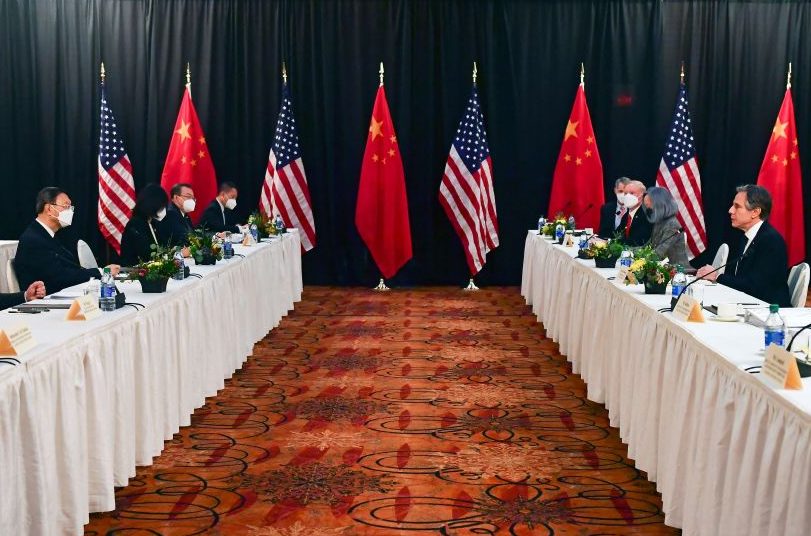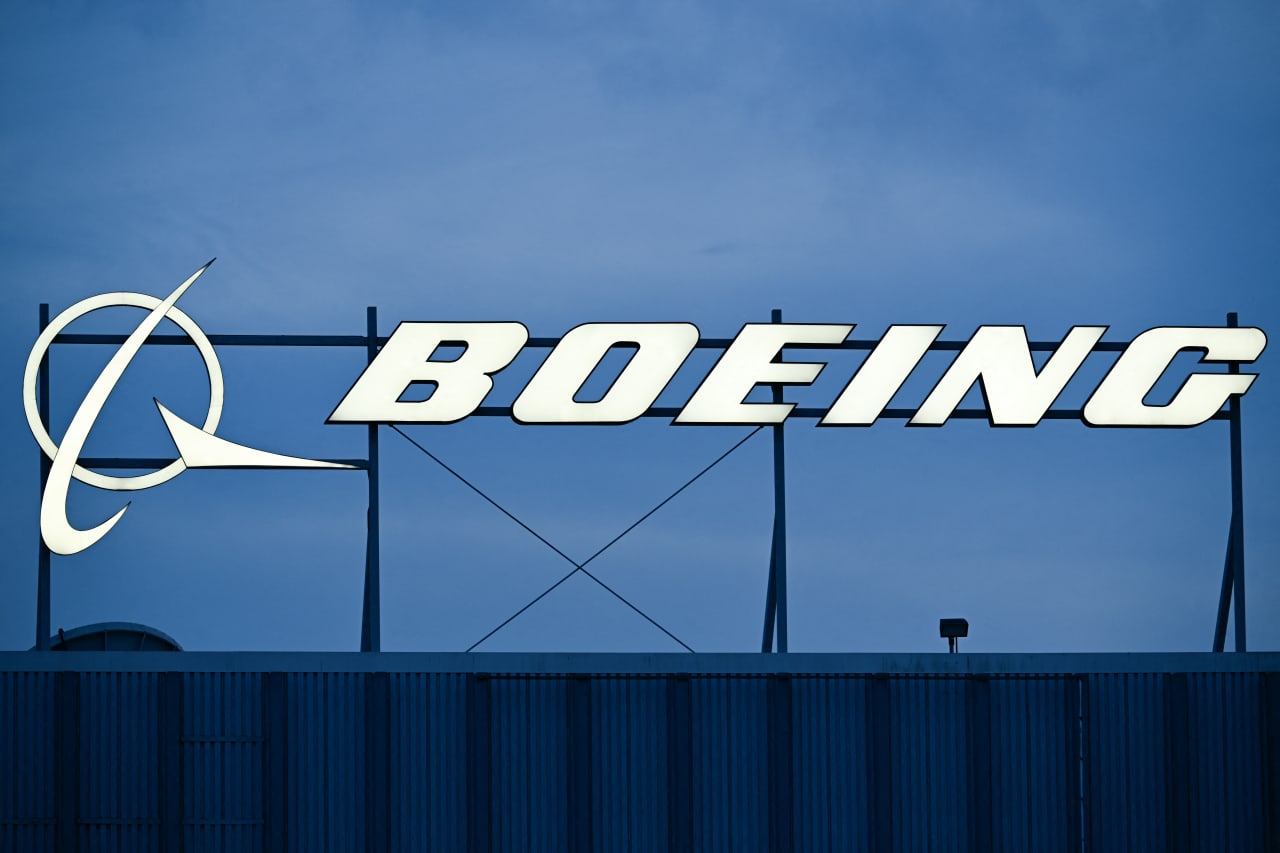China’s Message to America: We’re an Equal Now
President Xi is confronting the Biden administration with a new world view.
It quickly became obvious in Anchorage, Alaska, last month that Chinese President Xi Jinping’s diplomatic envoys hadn’t come carrying olive branches. Instead they brought a new world view.
As Biden administration officials expected in their first meeting with Chinese counterparts, Yang Jiechi, Mr. Xi’s top foreign-policy aide, and Foreign Minister Wang Yi asked them to roll back Trump-era policies targeting China. Beijing wanted to restore the kind of recurring “dialogue” Washington sees as a waste of time, say U.S. and Chinese officials briefed on the Alaska meeting.
Mr. Yang also delivered a surprise: a 16-minute lecture about America’s racial problems and democratic failings. The objective, say Chinese officials, was to make clear that Beijing sees itself as an equal of the U.S. He also warned Washington against challenging China over a mission Beijing views as sacred—the eventual reunification with Taiwan.
That is a big shift for Chinese leaders, who for decades took care not to challenge the U.S. as the world’s leader and followed the dictum Deng Xiaoping set decades ago: “Keep a low profile and bide your time.” Some senior Chinese officials privately—often sarcastically—called the U.S. Lao Da, or Big Boss.
Now Mr. Xi is reshaping the relationship. As far as he is concerned, China’s time has arrived.
“China can already look at the world on an equal level,” he told the annual legislative sessions in Beijing in early March, a remark widely interpreted in Chinese media as a declaration that China no longer looks up to the U.S.
The U.S. routinely describes China as a strategic rival, but Beijing has rarely if ever used such terms, emphasizing terms like “win-win” and cooperation.
“One of the more obvious changes in China’s attitude is that China now recognizes the existence of competition, which was never expressed in the past,” says Wang Huiyao, an adviser to China’s State Council and president of the Center for China and Globalization, a Beijing think tank.
The increasingly contentious relationship has created competition for allies, with American diplomats jetting to Japan, South Korea and Western Europe, while Chinese equivalents sew up deals in Southeast Asia, Russia and Iran.
Competitive relationship
Mr. Yang’s warning in Alaska on Taiwan reunification is an ominous inkling of how a competitive relationship between the world powers could lead to conflict.
The U.S. is committed to helping Taiwan preserve its autonomy under pledges including the 1979 Taiwan Relations Act, and the Biden team trumpets its plans to strengthen economic and political links to Taipei. Mr. Xi has made reunification with Taiwan, which Beijing regards as a breakaway province, a big part of his “China Dream” of national revival.
China’s Foreign Ministry says of Mr. Yang’s Anchorage warning: “The Chinese side pointed out that the Taiwan issue is related to China’s sovereignty and territorial integrity and China’s core interests.” It adds that “There is no room for compromise.”
There is little sign of imminent Chinese actions to take back the island, though there have been plenty of symbolic gestures. Soon after the Alaska meetings, Mr. Xi inspected Fujian province, across the strait from Taiwan. Chinese aeroplanes in recent weeks have stepped up incursions into Taiwan’s air-defense zone.
Days after the Alaska encounter, the White House’s China coordinator, Kurt Campbell, told a private conference hosted by the University of California at San Diego that Beijing had become “impatient” at the pace of reunification, according to participants.
Adm. Phil Davidson, who heads the U.S. Indo-Pacific Command, warned the Senate Armed Services Committee earlier in March that China could try to take control of Taiwan by decade’s end, perhaps in as little as six years. China might act rashly, says a senior U.S. official, because of an exaggerated belief that the U.S. is a declining power.
Relations between the countries plummeted during the Trump administration. After both sides fought a two-year trade war to a wary truce, the U.S. president blamed Beijing for unleashing the coronavirus. China rejected the charges and labelled Secretary of State Mike Pompeo a “doomsday clown.”
After Mr. Biden’s election, academics and officials in Beijing reached out to American contacts to try to figure out whether the new administration would change course. They were quickly discouraged.
Even before Mr. Biden took office, Chinese diplomats sought to schedule a high-level meeting between the two sides, people close to the matter say. Biden officials never approved the request and instead repeatedly talked about working with allies to confront China.
China’s concerns were reinforced in January, when Mr. Biden’s choice for secretary of state, Antony Blinken, used his confirmation hearing to declare that China had committed genocide against Uyghur Muslims in the northwestern region of Xinjiang. China has called the charge “the lie of the century.”
The Biden team shares its predecessor’s view of China as America’s greatest military, technological and economic challenger. From the new administration’s perspective, Chinese provocations never ceased. Beijing cut off imports from Australia over its call for an investigation into the origins of the coronavirus, skirmished with India over the countries’ Himalayan border and sought to intimidate Philippines and Vietnam ships in the South China Sea.
Beijing, as Chinese officials put it, sought to “duo hui hua yu quan,” or take back the narrative. China’s diplomats and state-media outlets aggressively denounced Western meddling in its domestic affairs and heralded China’s rise.
Before the Alaska meeting on March 18 and 19, the U.S. signaled a muscular approach. President Biden met online with the leaders of India, Australia and Japan. Mr. Blinken and Jake Sullivan, the national-security adviser, flew to Tokyo and Seoul to confer with security counterparts and insisted that Messrs. Yang and Wang fly to Alaska for the U.S.-China session rather than meeting in Asia. A day before the Anchorage meeting, the U.S. expanded sanctions against two dozen Chinese officials over the repression of Hong Kong’s pro-democracy protesters.
Some U.S. foreign-policy experts thought the Americans went overboard, including Jeffrey Bader, a senior China official in the Clinton and Obama administrations, now a senior fellow at the Brookings Institution. “The more you assert you’re not a declining power,” he says, “the less convincing you are.”
With cameras rolling in Anchorage, Mr. Blinken briefly criticized China’s actions in Hong Kong and Xinjiang and threats against Taiwan. Mr. Yang, a member of the Communist Party’s ruling Politburo, gave his blistering 16-minute rejoinder, which the Chinese officials say was meant to show China’s new world view.
After rattling off his country’s achievements under Mr. Xi, he said China wouldn’t follow “what is advocated by a small number of countries as the so-called rule-based international order.” He criticized the U.S. as having “deep-seated” human-rights problems and declared that “the U.S. itself doesn’t represent international public opinion.”
After the doors closed, say the officials briefed on the meeting, the Chinese laid out the differences between the nations in three categories. The first category was what could be dealt with fairly easily.
The second would require more negotiations. Issues involving both sides relaxing restrictions on diplomats and journalists belong to the first two groups.
The third category, largely concerning China’s sovereignty, was off limits.
On the second day, the diplomats addressed Taiwan. Control of the island has been a Communist Party goal since Mao Zedong’s forces drove Chiang Kai-shek’s Nationalist government there in 1949.
As he turned to the West after Mao’s death, Deng made clear that reunification could wait while China focused on developing its economy. For Mr. Xi, the wait is wearing thin. As Mr. Xi heads for an unprecedented third term as China’s leader late next year, his talk of national revival has broad support. There is little that would cement his legacy more forcefully than bringing the island back into Beijing’s fold, China watchers say.
In Anchorage, the U.S. reaffirmed its adherence to the “One China” policy, under which Washington agrees not to recognize Taiwan as an independent nation, but also reiterated pledges to help Taiwan economically and militarily.
“The Chinese are concerned about a slippery slope of Biden doing more and more on Taiwan,” says Bonnie Glaser, a China analyst at the Center for Strategic and International Studies. “They are using their ever-expanding tool kit to put pressure on Taiwan and signal the U.S. it better be careful.”
Sharp departure
Beamed back to China, Mr. Yang’s lecturing made him a national hero. It also represented a sharp departure from the policy of cooperation with the U.S. that Deng had adopted shortly after the two countries established diplomatic ties. “As we look back, we find that all of those countries that are with the U.S. have become rich,” Deng told aides in 1979, according to official accounts, “while all of those against the U.S. have remained poor. We should be with the U.S.”
That principle guided his successors. Jiang Zemin pushed through Beijing’s negotiations with Washington to get China into the global trading system in 2001. He wooed American and other CEOs to showcase the country’s greater opening to the world. The next leader, Hu Jintao, went further in following the U.S. lead. During the 2008 financial crisis, Mr. Hu signed up to a plan laid out by President George W. Bush to stimulate the Chinese economy to help lift the world from recession.
Mr. Xi started his reign on a similar path. His “China Dream” slogan nodded to the appeal of the American Dream. In late 2017, he entertained President Donald Trump at a private dinner in the Forbidden City, despite Mr. Trump’s threats to punish China.
“We have a thousand reasons to get the China-U.S. relationship right,” he regularly told Chinese underlings and foreign visitors, “and not one reason to spoil it.”
But as the Trump administration piled tariffs on Chinese imports and blacklisted major Chinese companies, which it argued were stealing U.S. intellectual property and helping to build up the Chinese military, Mr. Xi soured. From his perspective, the U.S. had become an unreliable partner, and he worked to make China less reliant on America, especially on technology.
In Beijing’s corridors of power, Mr. Trump was derisively known as “a great unifier”—America’s aggressive actions were unifying support in China for the party and Mr. Xi.
America’s chaotic pandemic response, followed by a summer of racial upheaval and the Jan. 6 Capitol storming, solidified his faith in the Chinese system’s superiority, Chinese officials say. In internal meetings, they say, he compares American democracy to “a sheet of loose sand” and declares that the one-party system allows him to get things done.
With Mr. Biden in the White House, China has continued a hard-line approach, signalling that companies not following Beijing’s rules will lose access to the Chinese market. Swedish clothing brand Hennes & Mauritz AB recently met with a strong social-media rage and consumer boycott in China over its stance against sourcing cotton from Xinjiang. Chinese authorities have restricted military personnel and employees of certain state-owned companies from using electric vehicles made by America’s Tesla Inc., citing national-security risks including concerns about the cars’ cameras. H&M declined to comment. Tesla, which didn’t respond to requests for comment, said last week that its cameras aren’t activated outside North America.
“Nobody has forced them to stay in China,” Mr. Yang said in Anchorage, regarding U.S. companies doing business in China.
Search for allies
Since the Alaska meeting, the competition has played out in a search for allies. Within a week, Mr. Blinken organized joint condemnation of China’s Xinjiang policy with Canada, the European Union and the U.K., which included the first EU human-rights sanctions on China since the 1989 crackdown on Tiananmen Square protesters.
Even Japan, typically wary of angering China, its largest trading partner, appears to be tying itself more tightly to the U.S. Last week ahead of a trip by Prime Minister Yoshide Suga to Washington for an April 16 summit with Mr. Biden, Foreign Minister Toshimitsu Motegi called on Beijing to improve human rights conditions for Uyghurs and stop the Hong Kong crackdown.
Mr. Wang, the foreign minister, met his Russian peer in late March, prompting the nationalist Chinese newspaper Global Times to headline, “China, Russia to break US hold on ‘world order.’ ” Then he travelled to the Middle East and signed a wide-ranging economic and security agreement with Iran.
Countries like India are trying to avoid getting caught between the two sides. Mr. Biden’s plan to hold a Summit for Democracy will sharpen the divide.
China retaliated against the EU sanctions by blacklisting European lawmakers and think tanks, although that might make the EU parliament’s ratification of a pending investment treaty with China more difficult.
“It’s a high-stakes gamble for the Chinese,” says Daniel Russel, a former Obama China official, now a vice president at the Asia Society Policy Institute, a think tank. “But it’s not a gamble they are certain to lose.”
 Copyright 2020, Dow Jones & Company, Inc. All Rights Reserved Worldwide. LEARN MORE
Copyright 2020, Dow Jones & Company, Inc. All Rights Reserved Worldwide. LEARN MORE
This stylish family home combines a classic palette and finishes with a flexible floorplan
Just 55 minutes from Sydney, make this your creative getaway located in the majestic Hawkesbury region.
More than one fifth of Australians are cutting back on the number of people they socialise with
Australian social circles are shrinking as more people look for ways to keep a lid on spending, a new survey has found.
New research from Finder found more than one fifth of respondents had dropped a friend or reduced their social circle because they were unable to afford the same levels of social activity. The survey questioned 1,041 people about how increasing concerns about affordability were affecting their social lives. The results showed 6 percent had cut ties with a friend, 16 percent were going out with fewer people and 26 percent were going to fewer events.
Expensive events such as hens’ parties and weddings were among the activities people were looking to avoid, indicating younger people were those most feeling the brunt of cost of living pressures. According to Canstar, the average cost of a wedding in NSW was between $37,108 to $41,245 and marginally lower in Victoria at $36, 358 to $37,430.
But not all age groups are curbing their social circle. While the survey found that 10 percent of Gen Z respondents had cut off a friend, only 2 percent of Baby Boomers had done similar.
Money expert at Finder, Rebecca Pike, said many had no choice but to prioritise necessities like bills over discretionary activities.
“Unfortunately, for some, social activities have become a luxury they can no longer afford,” she said.
This stylish family home combines a classic palette and finishes with a flexible floorplan
Just 55 minutes from Sydney, make this your creative getaway located in the majestic Hawkesbury region.






















